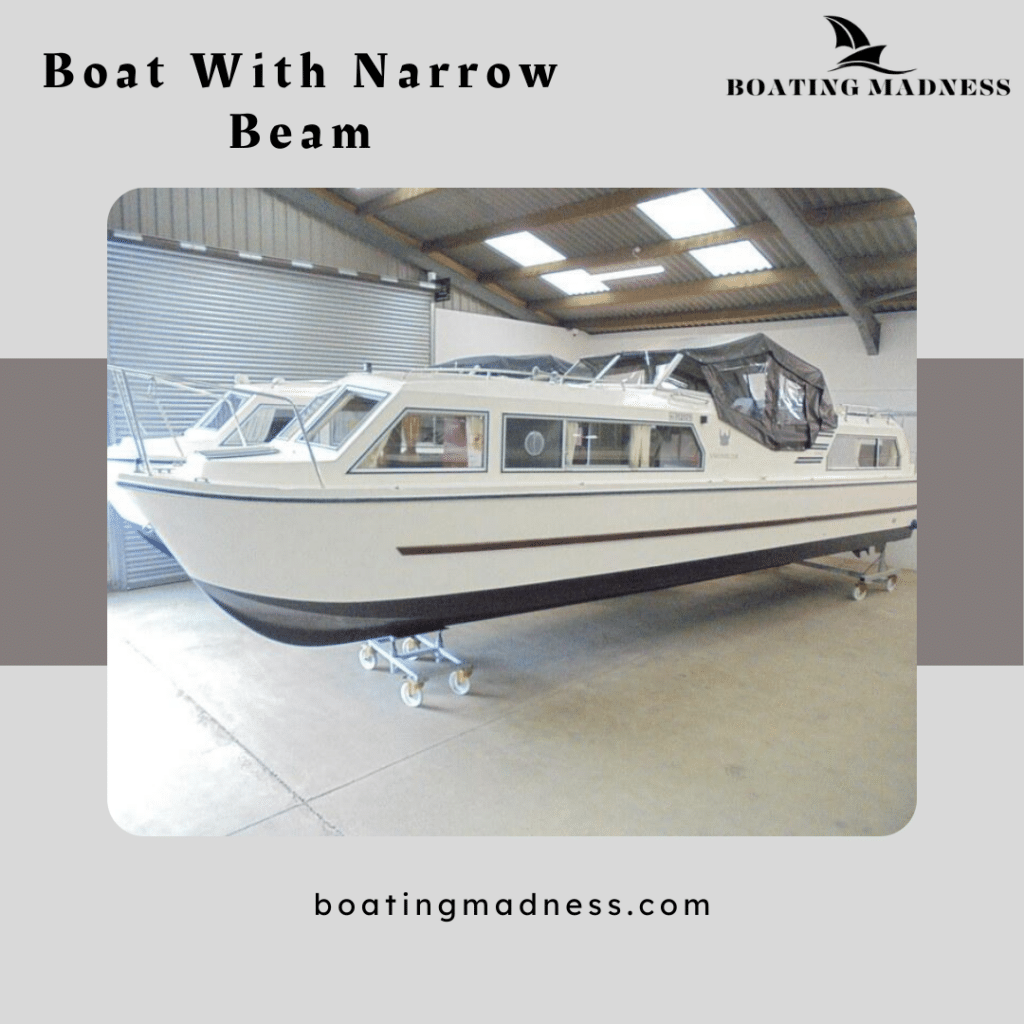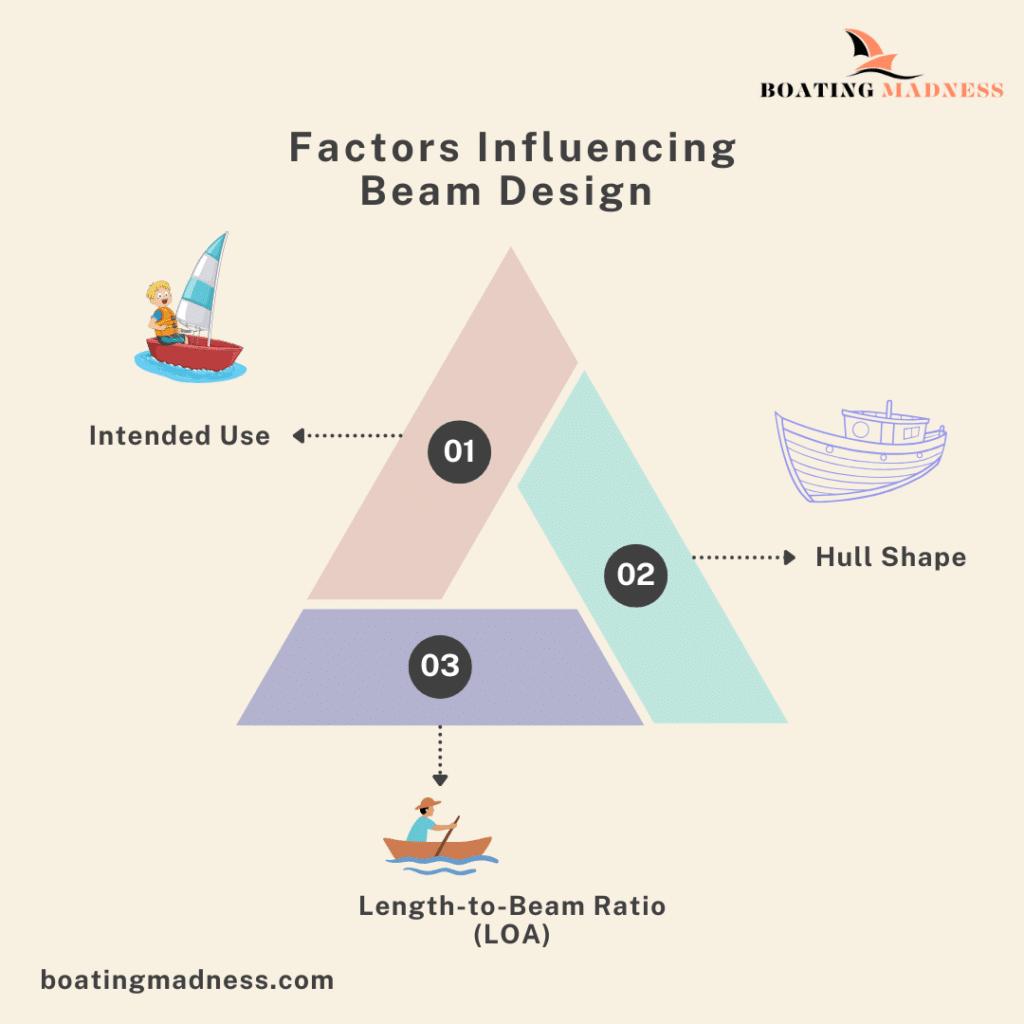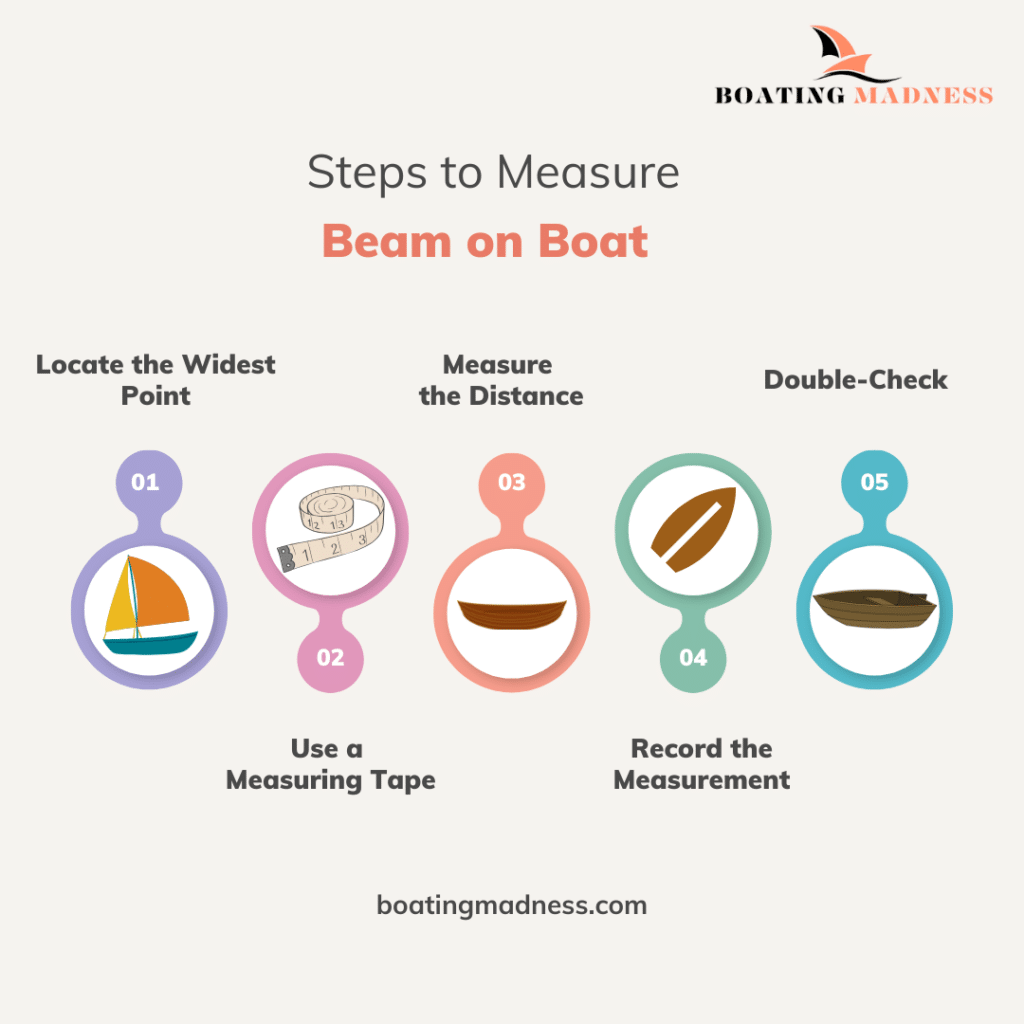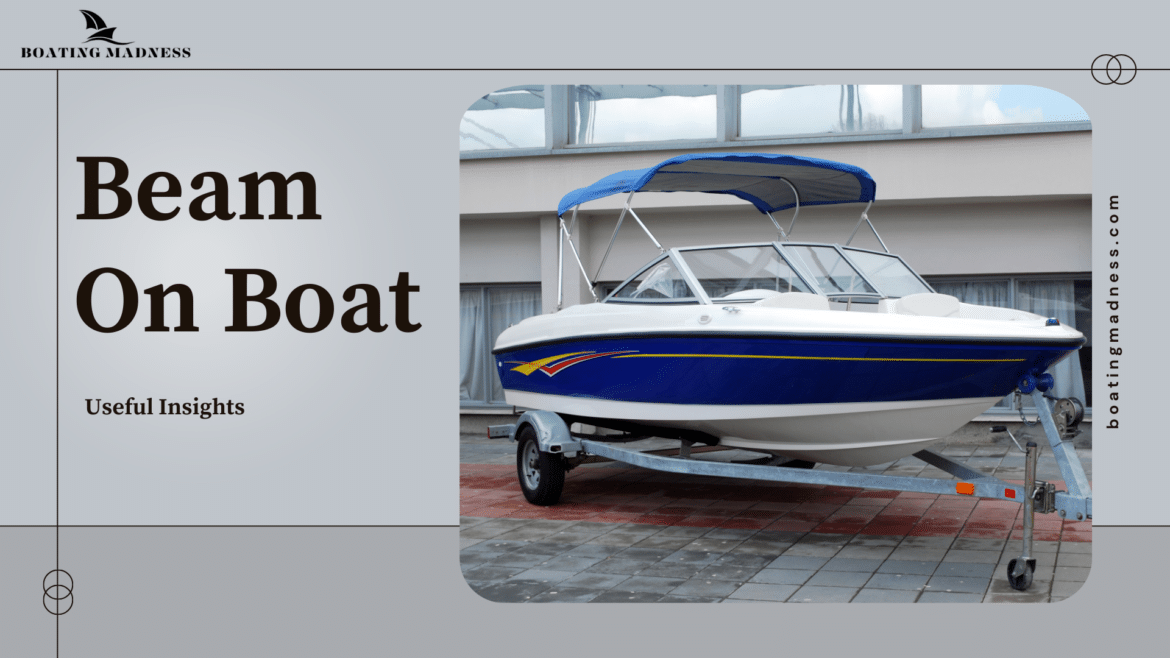Table of Contents
Hold on to your hats, boating aficionados; I am here with another guide on an important part of the boat. I am talking about the beam on boats, which plays a crucial role in providing the vessel with the needed stability and balance. So, to become a skillful boater and sailor, it is important that you understand the beam on a boat. When we talk about different parts of a boat, neglecting the beam would be stupid as it is the ideal balance for your vessel. To define, it simply means the width of a boat, of course, measured at its widest points. So, in this article guide, we will discuss different types of a beam, their impact on stability, and the factors influencing their design.
What is Beam on a Boat?

Let’s break it down! The beam is simply the boat’s width at its widest point, typically measured across the hull. Think of it as the boat’s “waistline.” A wider beam means more stability and space to stretch out, making it great for calm and steady rides. On the flip side, a narrow beam gives you speed and agility, perfect for zipping through the water. Knowing the beam size helps you choose the right boat for your needs—whether you want a cozy cruiser or a speedy thrill ride.
Quick Facts
Here are some quick facts about beams of boats:
- Wider beam = more stability: Great for family outings and calm waters.
- Narrow beam = more speed: Perfect for racing or adventurous trips.
- Affects interior space: Wider beams mean more room for seating and storage.
- Impacts docking and trailering: Bigger beams might need extra space and care.
- Choosing the right beam matters: Pick one that matches your boating style and needs!
Types of Beams on A Boat
When elucidating the parts of a boat and especially the beam on a boat, it’s imperative that we cover the types of beams.
Different vessels are designed with either of the types of beams to facilitate different features such as speed, durability, and stability. So, let’s discuss the types of beams on a boat.
There are two widely known types of beam width on boats:
- Narrow Beam
- Wide Beam
Narrow Beam

Wondering what the beam on a boat is? It’s just the width of the boat at its widest point! The beam affects how a boat handles, with narrow beams offering more speed and agility but less stability. Boats like racing yachts or certain fishing boats have narrow beams for that fast, smooth ride. But, they can tip or feel less steady in choppy waters.
Key Points
- Speed over stability: Narrow beams make boats faster but less stable.
- Less stable: They’re more likely to tilt in rough waters.
- Perfect for racing: Great for fast, agile moves.
Wide Beam on Boat

Wide-beam boats, like catamarans, prioritize stability and space over speed. They offer a smooth, steady ride, even in rough waters, with plenty of room inside.
Key Points
- Stable ride: Great for tough waters.
- More space: Extra room for comfort.
- Less speed: It is not built for high speed but is steady.
Impact of Beam on Boat Stability
The beam, being the widest part of any typical boat, impacts the stability a lot. It is known to maintain balance on both sides of the ship. So, let’s have a deeper look at the impact it generates.
Initial Stability
The beam plays a crucial role in how stable a boat feels when you first get on.
- Wide Beam: More stability, less chance of tipping—perfect for relaxed cruises with extra space for passengers and gear.
- Narrow Beam: Less stable but faster—ideal for racing and high-performance boats where agility is key.
Secondary Stability
The beam also impacts how well a boat handles when it’s leaning or rocked by waves.
- Wide Beam: Resists capsizing and stays steady in rough waters—great for safety and comfort.
- Narrow Beam: Less stable in tough conditions but built for speed; advanced tech helps keep it safe without slowing down.
Factors Influencing Beam Design

When we measure the beam on the boat, one thing should be kept in mind: there are various elements that exert some influence and have a multifaceted impact on beam design. So, let’s cover them one by one:
Intended Use
Think about where you’re going and what you’ll be doing; that’s what guides your beam choice.
- Wide Beam: Ideal for cruisers, offering stability and comfort.
- Narrow Beam: Best for racing, maximizing speed and agility.
Hull Shape
Hull shape and beam go hand in hand; it’s like the boat’s dance partner.
- Wide Beam: Flat-bottom hulls provide stability, which is perfect for leisure.
- Narrow Beam: V-shaped hulls are faster but less stable, balanced with modern designs.
Length-to-Beam Ratio (LOA)
Size matters – the right length-to-beam ratio keeps everything in balance.
- Wide Beam: More stable and comfortable, but slower.
- Narrow Beam: Faster and more agile, with a focus on speed over stability.
How to Measure Beam on Boat?

Attention sailors, don’t you want to know how to measure the beam on a boat? If yes, you have come to the right place.
- Locate the Widest Point: Find the hull’s widest part, usually amidships.
- Use a Measuring Tape: Place the tape horizontally across the widest point.
- Measure the Distance: Measure from one side to the other, perpendicular to the boat’s centerline.
- Record the Measurement: Write down the measurement in feet or meters.
- Verify Accuracy: Double-check to ensure the measurement is correct.
That’s it! Now, you know how to measure your boat’s beam with ease.
You can check out the detailed process of measuring the boat’s beam in this article.
Conclusion
Summing up, the article covered beams on boats in detail. For novice sailors, the concept has been elaborated in detail to help them refine their skills by comprehensive understanding. So, if you want a seamless water excursion, be abreast of boating techniques and parts.
Enjoy Stable Water Excursion!

